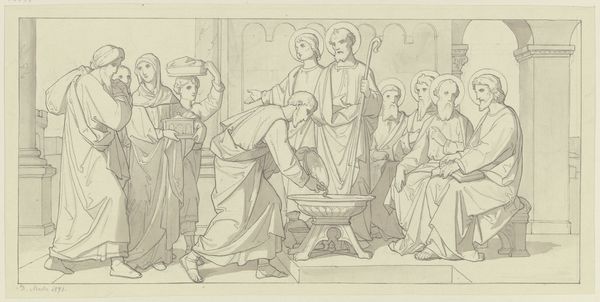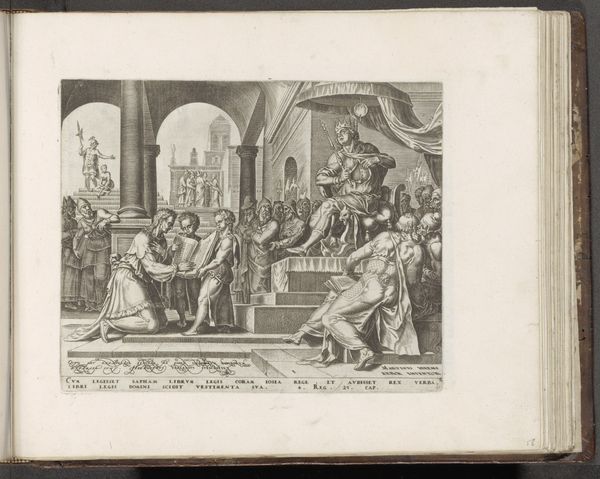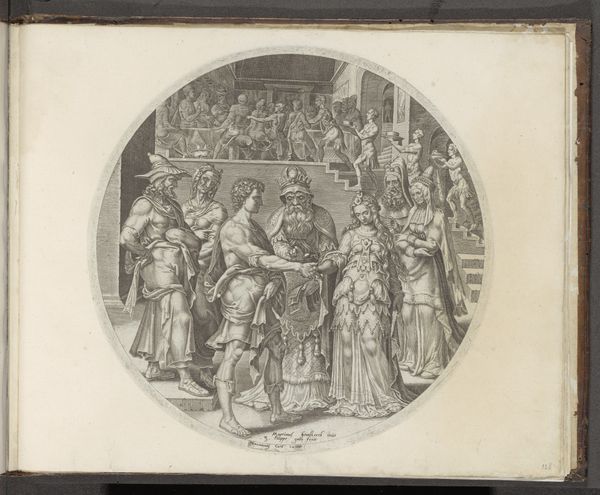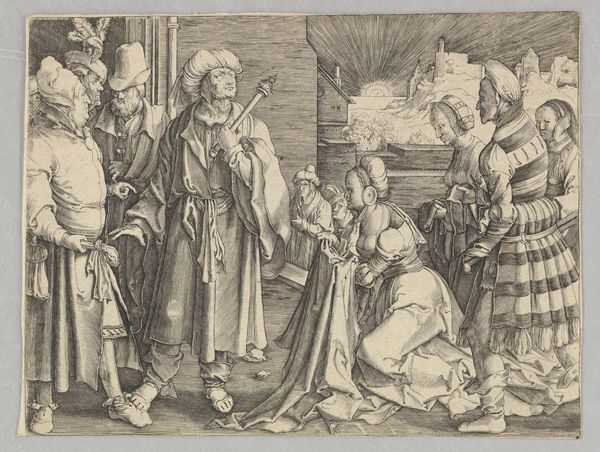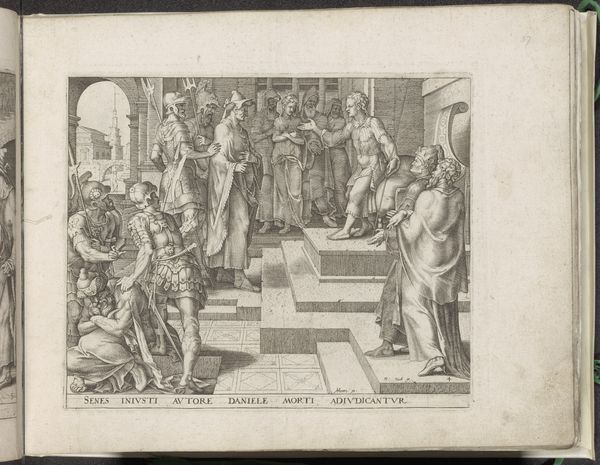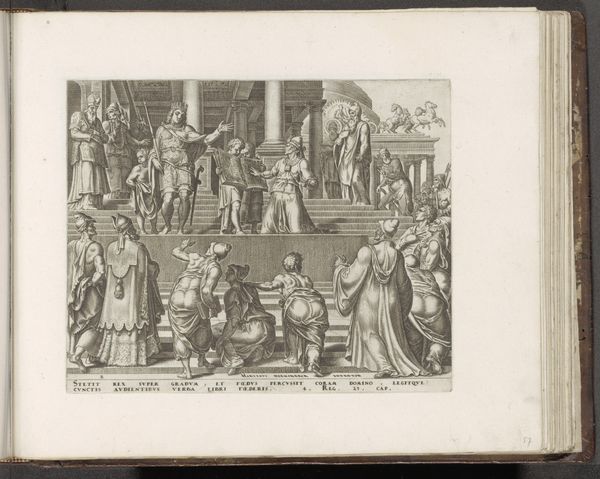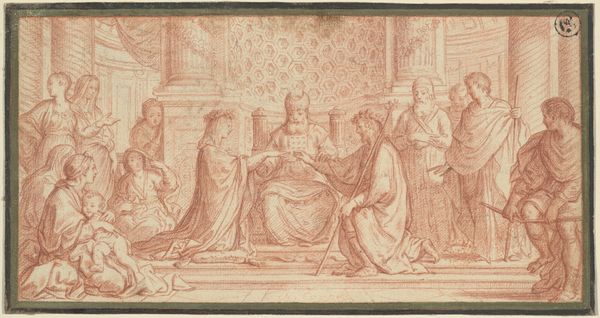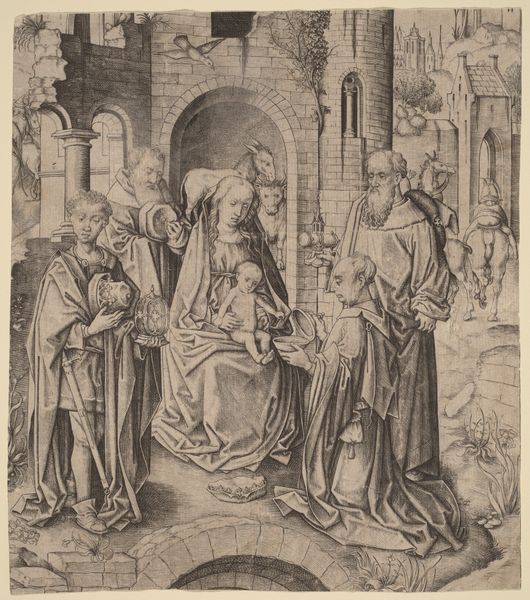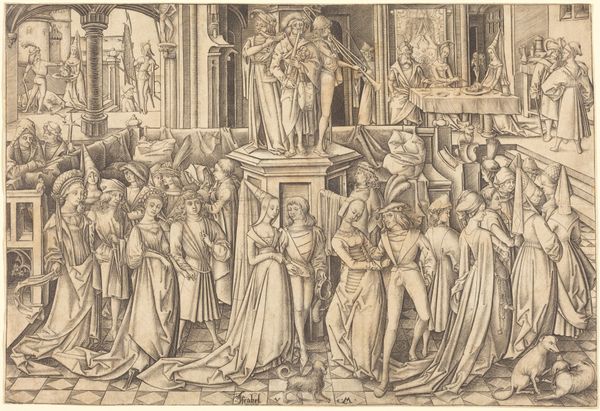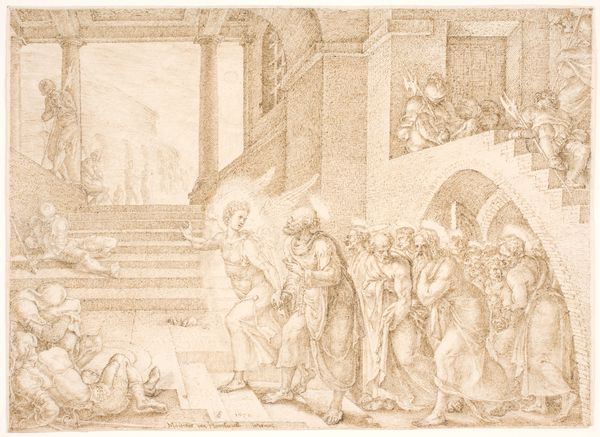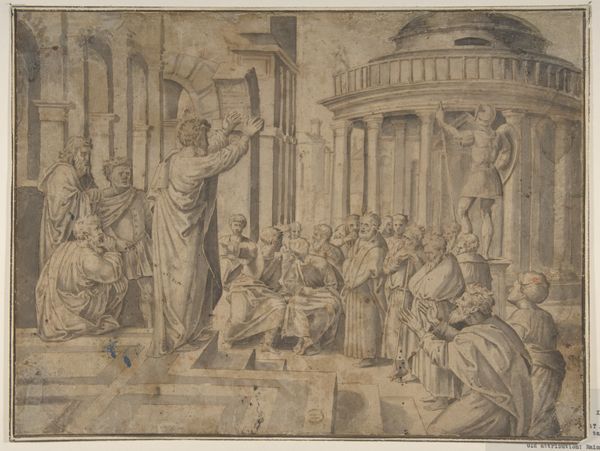
Fotoreproductie van fresco Prediking van de heilige Stefanus en De heilige Stefano voor de hogepriester en de wetsgeleerden, door Fra Angelico, Kapel van Nicolaas V, Vaticaan c. 1860 - 1900
0:00
0:00
fratellialinari
Rijksmuseum
print, fresco, photography
#
narrative-art
# print
#
fresco
#
photography
#
history-painting
#
italian-renaissance
Dimensions: height 327 mm, width 438 mm
Copyright: Rijks Museum: Open Domain
Curator: Here we have a photograph, a reproduction of a fresco originally by Fra Angelico. This photo, titled "Fotoreproductie van fresco Prediking van de heilige Stefanus en De heilige Stefano voor de hogepriester en de wetsgeleerden, door Fra Angelico, Kapel van Nicolaas V, Vaticaan," was captured sometime between 1860 and 1900, and offers a glimpse into a significant Renaissance work now housed in the Vatican. Editor: It's immediately striking how this sepia tone gives the scene a sense of profound gravity. The stark contrast heightens the solemnity of the figures; their halos glow ethereally even in monochrome. It makes you wonder what was at stake in this narrative. Curator: Well, considering the original fresco’s creation in the mid-15th century, it's important to contextualize it within the sociopolitical climate of the Renaissance papacy. The story of Saint Stephen's martyrdom resonated with the period's conflicts between religious authority and individual belief, a theme central to our understanding of power structures in that era. Editor: I agree. And, look at how Stephen, always recognizable by his halo, features in both halves of the painting. He is placed both proselytizing before a humble gathering and later before the Sanhedrin, framed by those architectural motifs like fortresses representing, perhaps, impenetrable doctrine. This juxtaposition invites interpretation, doesn’t it? Is it to represent that anyone can both preach and be put before religious leaders? Curator: Exactly. Fra Angelico masterfully uses Renaissance humanism by putting Saint Stephen as the ideal man; we should also note the very lack of women among the council and also the seated posture for women among the gathered congregation, the bodies telling an untold story about what that Renaissance world might have been like, far removed from this 'ideal man'. Editor: Interesting. In this photographic reproduction, the stark rendering draws attention to the cultural memory imbued within Christian iconography; for example, halos have long functioned as visual cues for recognizing holy figures, their representation altered, modified through diverse cultural landscapes, isn’t it? The Fratelli Alinari preserved, or reframed, a continuation of that imagery that even now can trigger those psychological associations. Curator: By rephotographing the frescoes, Fratelli Alinari, in turn, is also contextualizing how Renaissance narratives endure and evolve. The photograph becomes a new text—filtered through changing cultural and aesthetic prisms. Editor: Absolutely. This single image contains not just religious history but the legacy of image making. Curator: So, while rooted in Fra Angelico’s religious context, this photograph captures art’s evolving dialogue with historical and social discourse. Editor: And its undying symbolic resonance, echoing across centuries.
Comments
No comments
Be the first to comment and join the conversation on the ultimate creative platform.


